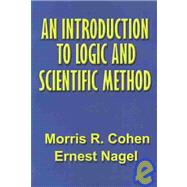| Preface | iii | ||||
|
|||||
|
3 | (2) | |||
|
5 | (3) | |||
|
8 | (5) | |||
|
13 | (3) | |||
|
16 | (5) | |||
|
21 | (6) | |||
|
|||||
|
|||||
|
27 | (3) | |||
|
30 | (14) | |||
|
44 | (8) | |||
|
|||||
|
52 | (4) | |||
|
56 | (1) | |||
|
57 | (8) | |||
|
65 | (3) | |||
|
68 | (8) | |||
|
|||||
|
76 | (2) | |||
|
78 | (1) | |||
|
78 | (2) | |||
|
80 | (1) | |||
|
81 | (3) | |||
|
84 | (1) | |||
|
85 | (1) | |||
|
85 | (1) | |||
|
86 | (1) | |||
|
87 | (4) | |||
|
91 | (3) | |||
|
94 | (2) | |||
|
|||||
|
96 | (4) | |||
|
100 | (1) | |||
|
101 | (2) | |||
|
103 | (1) | |||
|
103 | (2) | |||
|
105 | (5) | |||
|
|||||
|
110 | (3) | |||
|
113 | (2) | |||
|
115 | (2) | |||
|
117 | (4) | |||
|
121 | (5) | |||
|
126 | (3) | |||
|
|||||
|
129 | (4) | |||
|
133 | (4) | |||
|
137 | (4) | |||
|
141 | (2) | |||
|
143 | (4) | |||
|
147 | (1) | |||
|
148 | (3) | |||
|
|||||
|
151 | (7) | |||
|
158 | (6) | |||
|
164 | (9) | |||
|
|||||
|
173 | (4) | |||
|
177 | (4) | |||
|
181 | (4) | |||
|
185 | (6) | |||
|
|||||
|
191 | (227) | |||
|
|||||
|
197 | (3) | |||
|
200 | (2) | |||
|
202 | (5) | |||
|
207 | (8) | |||
|
215 | (6) | |||
|
221 | (2) | |||
|
|||||
|
223 | (1) | |||
|
224 | (10) | |||
|
234 | (4) | |||
|
238 | (3) | |||
|
241 | (4) | |||
|
|||||
|
245 | (4) | |||
|
249 | (2) | |||
|
251 | (5) | |||
|
256 | (4) | |||
|
260 | (1) | |||
|
261 | (3) | |||
|
264 | (1) | |||
|
265 | (2) | |||
|
267 | (2) | |||
|
269 | (4) | |||
|
|||||
|
273 | (6) | |||
|
279 | (5) | |||
|
284 | (2) | |||
|
286 | (3) | |||
|
|||||
|
289 | (2) | |||
|
291 | (2) | |||
|
293 | (3) | |||
|
296 | (1) | |||
|
297 | (1) | |||
|
298 | (4) | |||
|
|||||
|
302 | (1) | |||
|
303 | (7) | |||
|
310 | (2) | |||
|
312 | (4) | |||
|
316 | (7) | |||
|
|||||
|
323 | (3) | |||
|
326 | (3) | |||
|
329 | (5) | |||
|
334 | (6) | |||
|
340 | (4) | |||
|
344 | (3) | |||
|
347 | (5) | |||
|
|||||
|
352 | (1) | |||
|
353 | (4) | |||
|
357 | (5) | |||
|
362 | (5) | |||
|
367 | (9) | |||
|
|||||
|
376 | (5) | |||
|
381 | (1) | |||
|
382 | (9) | |||
|
|||||
|
391 | (8) | |||
|
399 | (8) | |||
|
|||||
|
407 | (6) | |||
|
413 | (5) | |||
| Exercises | 418 | (43) | |||
| Index | 461 |








